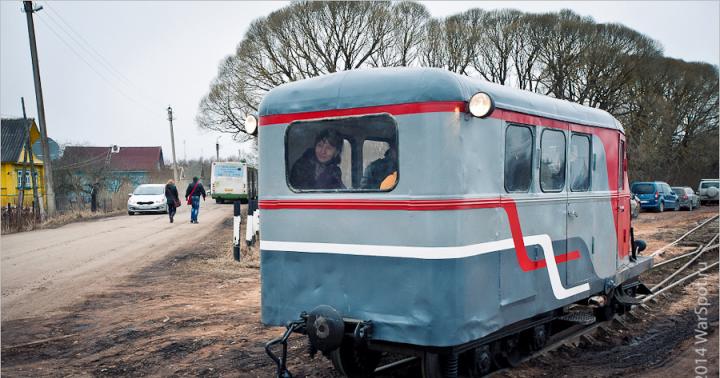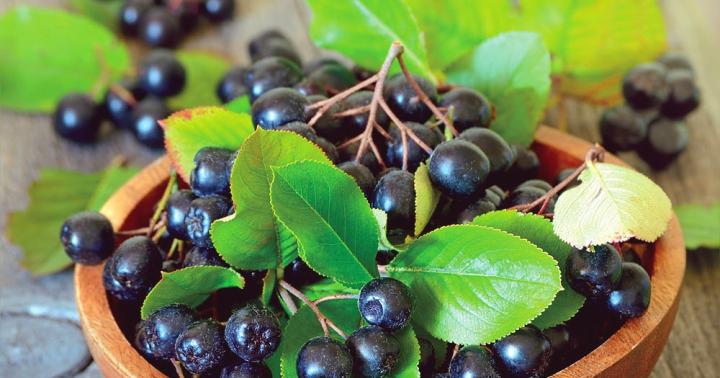Filling engine coolant and bleeding air
Do not remove the radiator cap when the engine is hot.
Release of hot liquid from the radiator high pressure may cause severe burns.
Before adding coolant, close the relay box cover. Pour the liquid carefully so that it does not splash onto electrical parts or paint. If coolant spills, wipe it up immediately.
1. Move the heater temperature control lever to the maximum heat position. Make sure the engine and radiator are cool to the touch.
2. Remove the radiator cap (A).

3. Turn inside out drain plug(A) and drain the coolant.

4. Tighten the radiator drain plug securely.
5. After draining the engine coolant, clean the reservoir.
6. Fill the radiator with water through the filler neck and tighten the cap.
To bleed air more effectively, pour water slowly and press on the upper/lower radiator hoses.
7. Start the engine and allow it to warm up to normal operating temperature. Wait until the cooling fans turn on several times.
Press down on the accelerator pedal to release the air faster. Stop the engine.
8. Wait until the engine has cooled down.
9. Repeat steps 1 through 8 until the drained water comes out clear.
10. Slowly pour a mixture of antifreeze and water (55~60%) (except North America, Europe and China: 45~50%) through the radiator cap. To make it easier to release air from the system, you can gently squeeze the upper and lower hoses.
Use only branded antifreeze and coolant.
To provide the best protection against corrosion, the antifreeze concentration should be maintained at a minimum of 55% throughout the year (except North America, Europe and China: 45%).
Antifreeze concentrations less than 55% (except North America, Europe and China: 45%) may not provide adequate corrosion or freeze protection.
Coolant concentrations greater than 60% are not recommended as they reduce cooling efficiency.
Do not mix antifreeze and coolants of different brands.
Do not use additional anti-corrosion additives as they may be incompatible with the coolant.
11. Start the engine and run until the coolant begins to circulate. With the cooling fan running and coolant circulating, add coolant through the radiator cap.
12. Repeat step 11 until the cooling fan turns on 3 to 5 times and bleed air from the cooling system.
13. Install the radiator cap and fill the reservoir with coolant to the “MAX” (or “F”) line.
14. Start the engine at Idling and wait for the cooling fan to complete 2~3 working cycles.
15. Stop the engine and wait for the coolant to cool.
16. Repeat steps 10 through 15 until the coolant level stops dropping and bleed air from the cooling system.
It takes a certain amount of time for the cooling system to bleed air. After the engine has completely cooled, add coolant and check the level in the reservoir after 2-3 days.
Coolant capacity: Manual: 6.9 L (1.82 US gal, 7.29 US qt, 6.06 US qt) Automatic: 6.7 L (1.76 US gal, 7.07 US qt) . quarts, 5.89 imperial quarts)
Antifreeze for Hyundai I30 Gd
The table shows the type and color of the required antifreeze for filling in the Hyundai I30 Gd,produced from 2012 to 2014.
| Year | Engine | Type | Color | Lifetime | Recommended Manufacturers |
| 2012 | petrol, diesel | G12++ | red | from 5 to 7 years | Freecor QR, Freecor DSC, Glysantin G 40, FEBI |
| 2013 | petrol, diesel | G12++ | red | from 5 to 7 years | FEBI, VAG, Castrol Radicool Si OAT |
| 2014 | petrol, diesel | G12++ | red | from 5 to 7 years | Frostschutzmittel A, FEBI, VAG |
When purchasing, you need to know the shade - Color And Type antifreeze allowed for the year of manufacture of your I30 Gd. Select the manufacturer at your discretion. Do not forget - each type of liquid has its own service life.  For example: for Hyundai I30 (Gd body) 2012, with petrol or diesel type engine, suitable - lobrid class antifreeze, type G12++ with shades of red. The approximate time for the next replacement will be 7 years. If possible, check the selected fluid for compliance with the requirements of the vehicle manufacturer's specifications and maintenance intervals. It is important to know Each type of liquid has its own color. There are rare cases, when the type is tinted with a different color.
For example: for Hyundai I30 (Gd body) 2012, with petrol or diesel type engine, suitable - lobrid class antifreeze, type G12++ with shades of red. The approximate time for the next replacement will be 7 years. If possible, check the selected fluid for compliance with the requirements of the vehicle manufacturer's specifications and maintenance intervals. It is important to know Each type of liquid has its own color. There are rare cases, when the type is tinted with a different color.
The color of red antifreeze can range from purple to light pink (for green and yellow too principles).  Mix liquid different manufacturers — Can, if their types meet the mixing conditions. G11 can be mixed with G11 analogues
G11 cannot be mixed with G12
G11 can be mixed G12+
G11 can be mixed G12++
G11 can be mixed G13
G12 can be mixed with G12 analogues
G12 cannot be mixed with G11
G12 can be mixed with G12+
G12 cannot be mixed with G12++
G12 cannot be mixed with G13
G12+, G12++ and G13 can be mixed with each other
Mixing Antifreeze with Antifreeze is not allowed. No way! Antifreeze and Antifreeze differ greatly in quality. Antifreeze is the trade name for the traditional type (TL) of old-style coolant. At the end of its service life, the liquid becomes completely discolored or becomes very dull. Before replacing one type of fluid with another, rinse the car radiator with plain water.
Mix liquid different manufacturers — Can, if their types meet the mixing conditions. G11 can be mixed with G11 analogues
G11 cannot be mixed with G12
G11 can be mixed G12+
G11 can be mixed G12++
G11 can be mixed G13
G12 can be mixed with G12 analogues
G12 cannot be mixed with G11
G12 can be mixed with G12+
G12 cannot be mixed with G12++
G12 cannot be mixed with G13
G12+, G12++ and G13 can be mixed with each other
Mixing Antifreeze with Antifreeze is not allowed. No way! Antifreeze and Antifreeze differ greatly in quality. Antifreeze is the trade name for the traditional type (TL) of old-style coolant. At the end of its service life, the liquid becomes completely discolored or becomes very dull. Before replacing one type of fluid with another, rinse the car radiator with plain water.
Antifreeze for Hyundai (Accent, Sonata, Elantra, Solaris, Tussan, Creta) and KIA (Sid, Sportage, Spectra, Rio) cars has the same article number, manufacturer and same composition. From the factory, these vehicles are filled with green coolant, made on the basis of ethylene glycol. She has Hyundai-Kia MS 591–08, Korean KSM 2142 and Japan JIS K 2234 specifications. The filling volume is different for each car, depending on the manufacturer's recommendations. In Russia (at the St. Petersburg plant) it is used instead analogue of CoolStream A-110. The specifications required for use in the cooling system are fully met by the four brands of antifreeze available on Russian market and CIS countries.
Antifreeze in Hyundai and KIA that is filled from the manufacturer
All configurations of the above-mentioned cars are always filled with the same antifreeze - green (do not confuse it with G11). There are slight differences only depending on the country of manufacture of the car.
For cars manufactured in Russia, antifreeze is produced by Technoform OJSC by order of Mobis Parts CIS LLC. The article number for this liquid is R9000AC001Н. This is a white liter bottle with the Hyundai or Kia emblem and the inscription Antifreeze Crown LLC A-110 belongs to the phosphate-carboxylate class. Manufactured using the technologies of the Korean company Kukdong. In addition to ethylene glycol, this liquid contains demineralized water and a special concentrate AC-110. Often, this antifreeze is purchased for refilling. Previously no need to dilute it with distilled water.
There is also the same liquid, only under the article number R9000AC001K. According to the catalog it is used for KIA cars(this is indicated by the last letter K in the article). Both in composition and volume, both antifreezes are completely identical. Coolants are based on ethylene glycol, as is installed on Kia, just like Hyundai aluminum radiator. Both comply with Hyundai/Kia specification MS591-08 and JIS K 2234. There is only a slight difference in price.

Original coolant for Hyundai and KIA produced outside of Russia - Hyundai/Kia Long Life Coolant(concentrate) has article number 0710000200 (2 l) or 0710000400 (4 l). Manufacturer - KUKDONG JEYEN COMPANY LTD. This antifreeze is based on phosphate ethylene glycol and contains a minimum of amines, borates, silicates and nitrites, but belongs to the silicate class. Typically, the packaging of this product indicates a shelf life of 2 years (Coolant 2yr). But at the same time, the manufacturer recommends replacing antifreeze on Hyundai once every 10 years. These disagreements are due to the fact that when long-term storage This liquid may cause sediment to form at the bottom of the container.
Since this South Korean antifreeze is supplied as a concentrate, before use it must be diluted with distilled water. It is advisable to dilute 1 to 1. In such proportions, a lower temperature of -37 ° C is achieved, and if you take 60 parts versus 40 water, then all of -52 degrees (in warm regions where the temperature does not drop below -26 ° C, they use inverse proportion). For other ratios, the lower working temperature. As a rule, such coolant is purchased when it is produced complete replacement coolant.
What kind of antifreeze can be poured into Hyundai and Kia?
In addition to those liquids that are poured from the assembly line, due to the high price of the original, substitutes are used for all Hyundai / Kia cars that fully meet all the necessary requirements. Direct analogue The original Russian antifreeze from the manufacturer is liquid - CoolStream A-110. It can be sold in 1 and 5 liter canisters. This is a non-original antifreeze and is produced by the same company “Technoform” in the city of Klimovsk. This is an exact copy of what is sold under the Hyundai/Kia brand only in its own packaging. In a car system, in constant circulation, the fluid lasts up to 10 years or 200 thousand km, although if you rely on the manufacturer’s recommendations, this should be an order of magnitude earlier - 120,000 km. The table below shows the physical and chemical characteristics of this antifreeze.
Also very close popular analogue, antifreeze from a German company that meets all the necessary specifications RAVENOL - HJC Hybrid Japanese Coolant. In composition and color it is similar to original liquid, but belongs to the hybrid class and the service life is only 3 years or 60 thousand km. Sold both as a concentrate and as a ready-made liquid for refilling. Has several articles for ordering.

CoolStream A-110

RAVENOL HJC Hybrid Japanese Coolant
When do you need to change antifreeze on Hyundai and Kia?
According to manufacturers' recommendations, most Hyundais (Accent, Sonata, Elantra, Solaris, Tucson, Creta) and KIA (Ceed, Sportage, Spectra, Rio) need to be replaced once every 10 years, or every 120 thousand km. But many experienced drivers agree that this is too long a period, and recommend changing it at least every 2 years, or 30 thousand km. You can use distilled water or ready-made diluted antifreeze (not concentrate). Water is usually added when the car is used intensively in the hot season.


